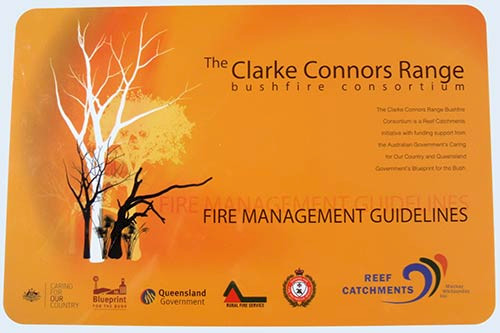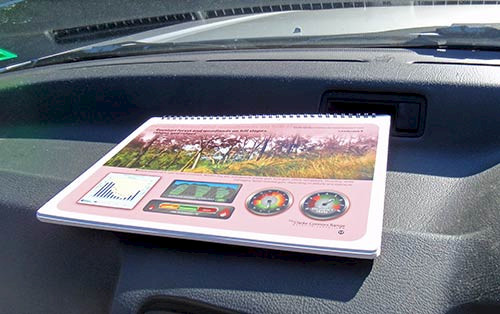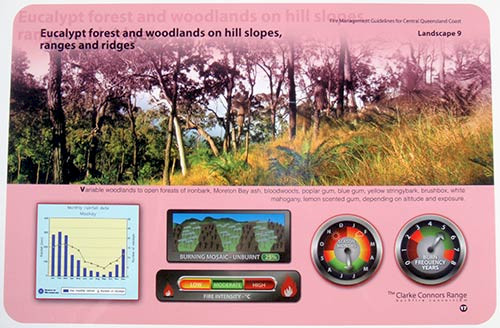Dashboard books on fire: Communicating fire management creatively
Bill Dennison ·Reef Catchments in Mackay, working with a range of partners, has produced a superb set of 'dashboard books' designed to ride around on the dashboards in volunteer rural fire brigade trucks or landholder trucks (utes) and provide easily accessible fire management information. Andrew Houley with Reef Catchments, a self-avowed firebug, produced these high quality books, which employ excellent science communication techniques. The spiral bound books were produced with thick teflon paper that was tear-proof but can be written on. The spiral binding allowed them to be laid flat open. They have been experimenting with different paper coatings to develop resistance to staining by diesel fuel and other liquids. Andrew was able to entrain a wide range of partners and develop a cost effective print run so that the high, full color books could be reproduced inexpensively. This is important to achieve widespread dissemination to volunteer rural fire brigades and landowners who are on the front line of managing fire in rural communities.


The books used large landscape photographs of the different vegetation types (e.g., grasslands, wet eucalypt forests, rainforests, etc.) which included vegetation in which fire suppression is recommended (e.g., rainforests) and vegetation in which regular controlled burns are recommended (e.g., grassy woodlands). In addition, conceptual diagrams which used Integration and Application Network symbols were used to depict the desired burning mosaic. A variety of dials were also used to indicate the time of year and burn frequency, which incorporated a stoplight system of red to green to indicate recommended practices. The dials were selected instead of timelines or other possible graphics because the audience and setting for these books was people driving trucks who were familiar with reading dials. Another subtle but important feature was the use of large fonts to facilitate reading in a variety of lighting situations. Kate Moore pointed out the raised font when printed on Teflon paper, which was almost like Braille, as your fingers could detect the raised letters.

The text was divided into sections on hazard reduction, production, and conservation, often illustrated with carefully chosen photographs. Andrew and I had read "Fire: A Brief History" by Stephen Pyne, a wonderful book about the relationship of humans with fire and the different cultural perspectives. In the U.S., fire suppression has been the dominant approach, which can result in infrequent, but large and hot fires. In contrast, the Australian approach, which indigenous Australians practiced for tens of thousands of years, is repeated burning, resulting in small frequent fires that maintain habitat and avoids large animal mortalities.
Andrew talked about the subsequent Stephen Pyne books and about Andrew's experience with aerial ignition in Cape York by dropping ping-pong balls filled with incendiary substances. His wealth of knowledge about fire ecology and his passion for the topic were evident and it occurs to me that these are two ingredients in developing effective science communication: knowledge and passion. The other ingredient is good science communication, and one of the former students from a course that Jane Thomas and Kate Moore ran in Brisbane four years ago was employed on the project, and the science communicator was able to capture Andrew's knowledge and passion effectively.

About the author
Bill Dennison

Dr. Bill Dennison is a Professor of Marine Science and Interim President at the University of Maryland Center for Environmental Science (UMCES).